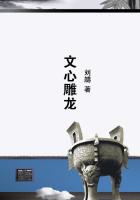The natives, also, take advantage of the dry air to operate a novel method of refrigeration. The cloth covered army canteen soaked in water and the handy water jug of the eastern harvest field wrapped in a wet blanket are familiar examples of an ineffectual attempt at refrigeration by evaporation. But natural refrigeration find its best illustration in the arid regions of the southwest by the use of an olla, which is a vessel made of porous pottery, a stout canvas bag or a closely woven Indian basket. A suitable vessel is selected, filled with water and suspended somewhere in midair in the shade. If it is hung in a current of air it is all the better, as any movement of the atmosphere facilitates evaporation. A slow seepage of water filters through the open pores of the vessel which immediately evaporates in the dry air and lowers the temperature. The water in the olla soon becomes cold and if properly protected will remain cool during the entire day.
The dry air also acts as a valuable preservative. During the winter, when the weather is cool but not freezing, if fresh meat is hung out in the open air, it will keep sweet a long time. Adry crust soon forms upon its surface which hermetically seals the meat from the air and keeps it perfectly sweet. In the summer it is necessary to dry the meat more quickly to keep it from spoiling. It is then made into "jerky" by cutting it into long, thin strips and hanging them up in the sun to dry. After it is thoroughly dried, it is tied up in bags and used as needed, either by eating it dry from the pocket when out on a tramp, or, if in camp, serving it in a hot stew.
Even the carcass of a dead animal that is left exposed upon the ground to decompose does not moulder away by the usual process of decay, but what is left of the body after the hungry buzzards and coyotes have finished their feast, dries up into a mummy that lasts for years.
Climate everywhere unquestionably influences life in its evolution, but it is not always easy to determine all of its effects in detail. In Arizona, which is but a comparatively small corner of our country, live several races of men that are as different from each other as nature could make them, yet all live in the same climate.
The Pueblo Indian is in a manner civilized, peaceable and industrious. He is brave in self-defense, but never seeks war nor bloodshed. Quite different is his near neighbor, the bloodthirsty Apache, who seems to delight only in robbing and killing people. Cunning and revenge are pronounced traits of his character and the Government has found him difficult to conquer or control. The Mexican leads a shiftless, thriftless life and seems satisfied merely to exist. He has, unfortunately, inherited more of the baser than the better qualities of his ancestors, and, to all appearance, is destined to further degenerate. The American is the last comer and has already pushed civilization and commerce into the remotest corners and, as usual, dominates the land.
As diverse as are these several races in many respects, each one of them furnishes splendid specimens of physical manhood. The Indian has always been noted for his fine physique, and is large bodied, well muscled and full chested. One advantage which the southwest has over other countries is that the climate is mild and favorable to an outdoor life, which is conducive to health and physical development.
No single race of men flourish equally well everywhere, but each one is affected by its own surroundings; and, what is true of a race, is also true of an individual. The pioneer in any country is always an interesting character, but he differs in peculiarities according to his environment of mountain, plain or forest. Occupation also exerts an influence and in time develops distinct types like the trapper, miner, soldier and cowboy, that only the graphic pencil of a Remington can accurately portray.
The eccentricities of character which are sometimes met in men who dwell on the frontier are not always due alone to disposition, but are largely the product of the wild life which they live, that inclines them to be restless, reckless and even desperate.
There is no better field for observing and studying the effects of environment upon human life than is furnished by the and region of the southwest.
End











